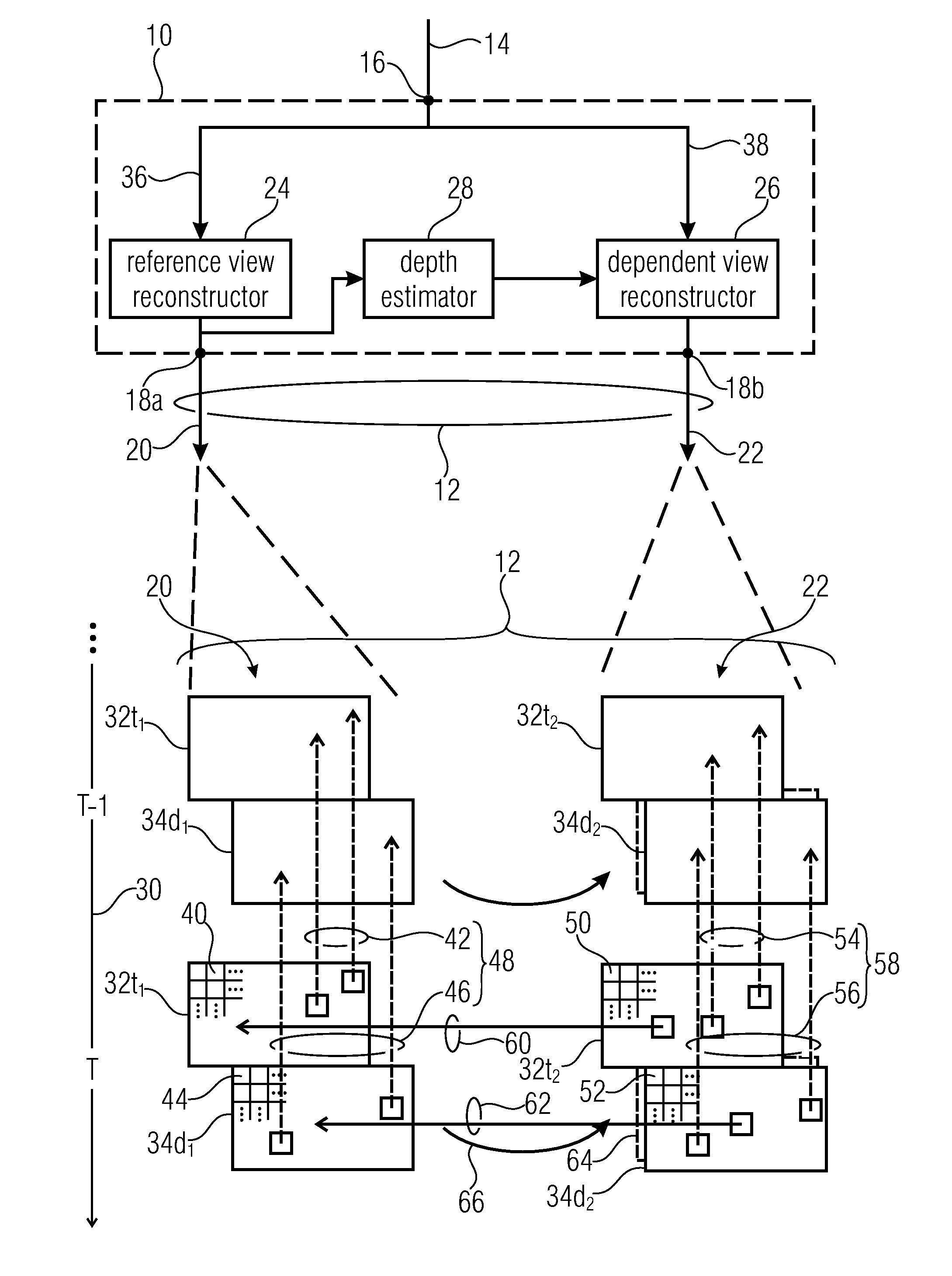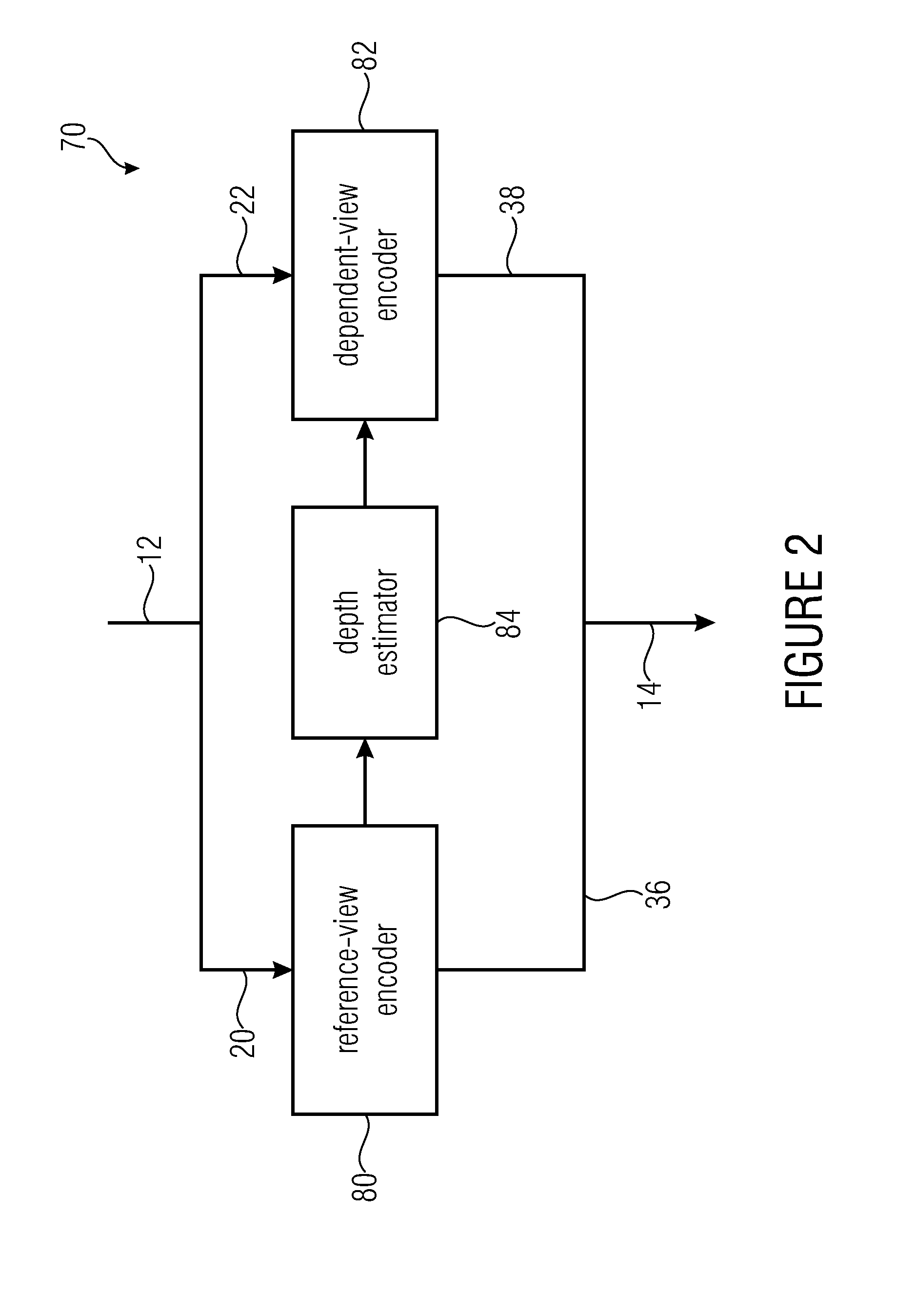Efficient multi-view coding using depth-map estimate for a dependent view
a multi-view coding and dependent view technology, applied in the field of multi-view video coding, can solve the problems of large interdependencies between multiple views, scalable video coding, and annoying user glasses for conventional stereo displays, and achieve the effect of reducing the redundancy of the interview more efficiently
- Summary
- Abstract
- Description
- Claims
- Application Information
AI Technical Summary
Benefits of technology
Problems solved by technology
Method used
Image
Examples
Embodiment Construction
[0028]FIG. 1 shows an embodiment for an apparatus 10 for reconstructing a multi-view signal 12 coded into a multi-view data stream 14. The apparatus 10 comprises an input 16 for the multi-view data stream 14, and two outputs 18a and 18b for a reference view signal 20 and a dependent view signal 22, respectively.
[0029]Further, apparatus 10 comprises a reference view reconstructor 24 connected between input 16 and output 18a and a dependent view reconstructor 26 connected between input 16 and output 18b. A depth map estimator 28 of apparatus 10 is connected between an output of reference view reconstructor 24 and a reference input of dependent view reconstructor 26.
[0030]As will be outlined in more detail below, the apparatus or decoder 10 of FIG. 1 reconstructs the multi-view signal 12 from the multi-view data stream 14 by obeying a coding / decoding order according to which the reference view signal 20 is processed prior to dependent view 22. The multi-view signal 12 may, as shown in ...
PUM
 Login to View More
Login to View More Abstract
Description
Claims
Application Information
 Login to View More
Login to View More - R&D
- Intellectual Property
- Life Sciences
- Materials
- Tech Scout
- Unparalleled Data Quality
- Higher Quality Content
- 60% Fewer Hallucinations
Browse by: Latest US Patents, China's latest patents, Technical Efficacy Thesaurus, Application Domain, Technology Topic, Popular Technical Reports.
© 2025 PatSnap. All rights reserved.Legal|Privacy policy|Modern Slavery Act Transparency Statement|Sitemap|About US| Contact US: help@patsnap.com



